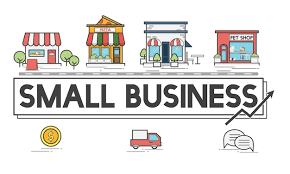Small Business: Everything You Need to Know
Introduction
Did you know that small businesses account for 99.9% of all businesses in the U.S.? They are the backbone of the economy, fueling job creation and innovation. Whether you’re an aspiring entrepreneur or an established business owner, understanding small business operations, benefits, and challenges can be the key to long-term success.
This guide will cover everything you need to know about small businesses, including their definition, historical background, importance, common misconceptions, modern trends, and how to start or scale your own venture.
What Is a Small Business?
A small business is a privately-owned company that operates on a smaller scale compared to larger corporations. According to the U.S. Small Business Administration (SBA), a business is classified as “small” based on industry-specific standards such as:
Number of employees (typically fewer than 500 for most industries, and under 100 for others)
Annual revenue (varies by sector but often below $50 million)
Market reach (local, regional, or niche-focused rather than global)
Small businesses include sole proprietorships, partnerships, LLCs, and corporations that prioritize customer relationships and flexible operations over large-scale expansion.
A Brief History of Small Businesses
Small businesses have existed for centuries, dating back to local traders and craftsmen in ancient civilizations. Over time, they evolved through different economic shifts:
Industrial Revolution (18th-19th Century): Shifted many small businesses to factory-based production but left room for specialized local businesses.
20th Century: The rise of franchises and small enterprises fueled economic diversity.
21st Century: Technology, e-commerce, and digital marketing have revolutionized how small businesses operate, making them more competitive than ever.
The Key Attributes of a Small Business
1. Independence
Most small businesses are independently owned and operated, meaning the founder(s) maintain control over decision-making.
2. Limited Workforce
Unlike large corporations, small businesses typically employ a smaller team, sometimes fewer than 10 employees.
3. Niche Focus
Small businesses often serve specific markets, providing personalized products and services that larger competitors may overlook.
4. Local or Regional Presence
Many small businesses operate within local or regional boundaries, though some leverage e-commerce to reach a broader audience.
5. Lower Revenue and Investment
While some small businesses generate substantial revenue, they usually require less capital to start and operate compared to large enterprises.
Importance and Benefits of Small Businesses
Small businesses play a crucial role in economic growth, contributing to employment, innovation, and local community development. Here’s why they matter:
1. Job Creation
According to the SBA, small businesses create nearly two-thirds of new jobs in the U.S. each year.
2. Innovation and Creativity
Unlike corporate structures, small businesses can rapidly adapt to market changes and test innovative ideas with less bureaucracy.
3. Economic Growth
By generating revenue, paying taxes, and increasing competition, small businesses strengthen local and national economies.
4. Personal Customer Relationships
With a more hands-on approach, small business owners build strong connections with customers, enhancing trust and loyalty.
5. Opportunities for Entrepreneurs
A small business offers individuals the chance to pursue their passions while being their own boss.
Common Misconceptions About Small Businesses
1. Myth: Small Businesses Don’t Make Big Profits
Reality: While some startups struggle initially, many small businesses achieve high profitability, particularly in niche markets.
2. Myth: You Need a Huge Investment to Start
Reality: Many small businesses start with minimal capital, often with self-funding or small business loans.
3. Myth: Small Businesses Can’t Compete with Large Corporations
Reality: With digital marketing and e-commerce, small businesses can reach global audiences and compete effectively.
How to Start a Small Business in 5 Steps
Step 1: Identify a Profitable Business Idea
Conduct market research to find a viable niche that matches your skills and interests.
Step 2: Create a Business Plan
Outline your business goals, strategies, budget, and potential challenges.
Step 3: Register Your Business
Choose a business structure (LLC, sole proprietorship, etc.), register your business name, and obtain necessary permits.
Step 4: Secure Funding
Explore funding options such as:
Small business loans
Grants
Crowdfunding
Investor backing
Step 5: Launch and Market Your Business
Develop an online presence, utilize social media, and implement marketing strategies to attract customers.
Modern Trends in Small Business
1. Digital Transformation
E-commerce and online sales are reshaping small businesses.
Remote work tools are enabling businesses to operate with fewer physical constraints.
2. Social Media Marketing
Platforms like Instagram, TikTok, and LinkedIn are becoming essential for small business branding.
3. Subscription-Based Models
Many businesses are adopting membership and subscription services for steady revenue streams.
4. Sustainable Business Practices
Customers increasingly prefer eco-friendly and ethical business models.
Challenges Faced by Small Businesses
Financial Constraints: Limited access to capital and fluctuating cash flow.
Market Competition: Competing with large corporations and other small businesses.
Regulatory Compliance: Navigating taxes, permits, and labor laws.
Economic Fluctuations: External factors such as inflation and supply chain disruptions.
Conclusion: Why Small Businesses Matter
Small businesses are the lifeblood of the economy, driving employment, innovation, and local prosperity. Whether you’re planning to start one or already own one, understanding the landscape of small business can help you make informed decisions.
Next Steps:







 4.1 Attribution Theory and Person Perception: Why We Judge People the Way We Do (Even When We’re Totally Wrong) Let’s be honest. We’ve all
4.1 Attribution Theory and Person Perception: Why We Judge People the Way We Do (Even When We’re Totally Wrong) Let’s be honest. We’ve all


